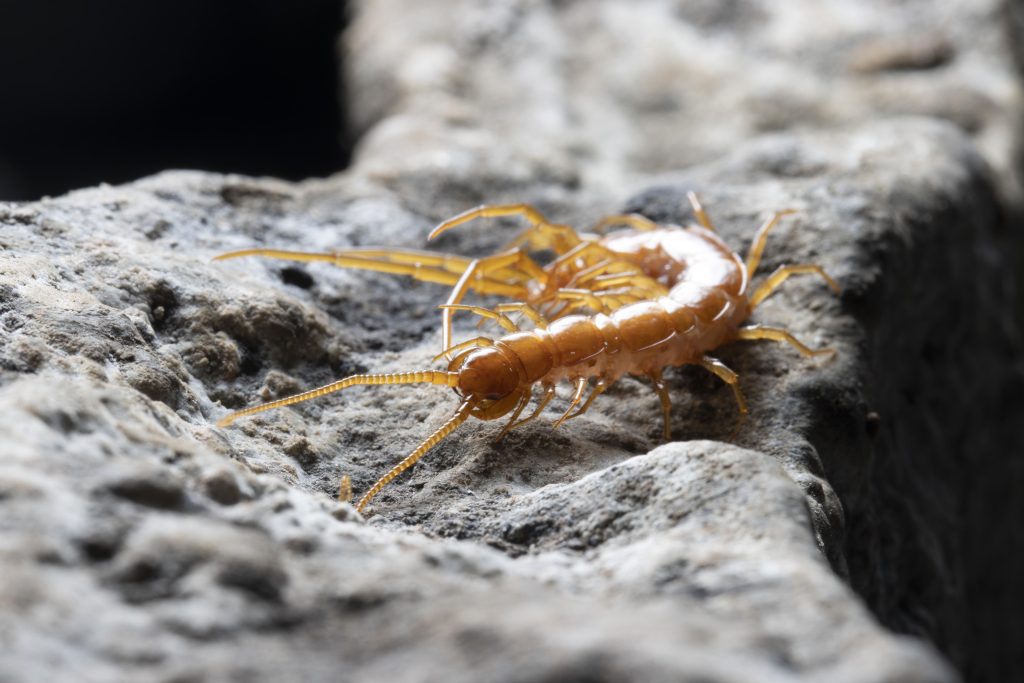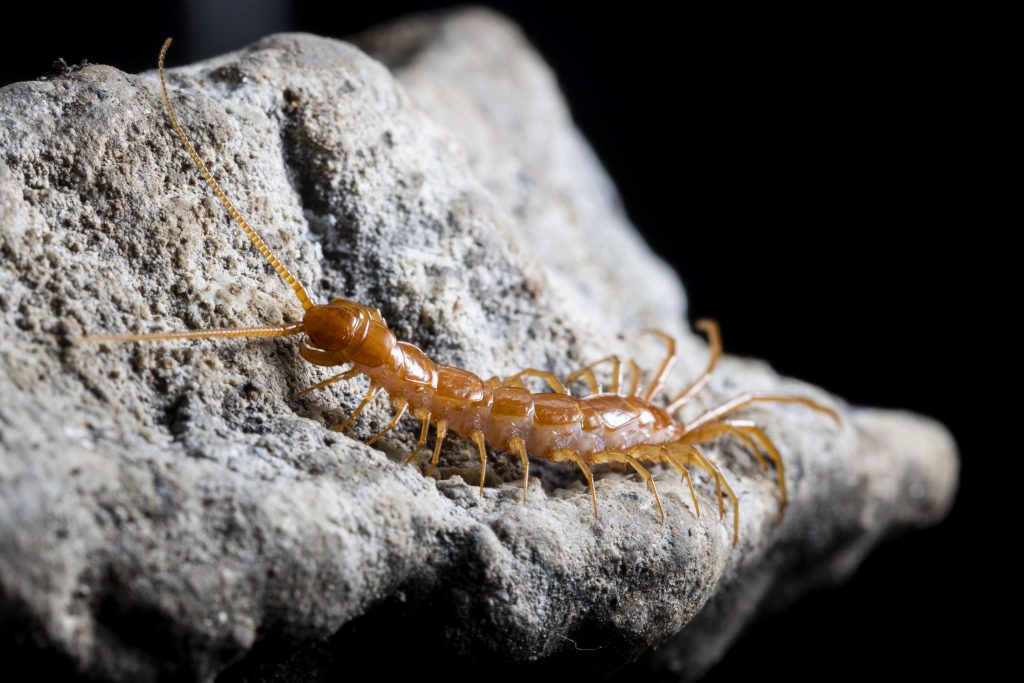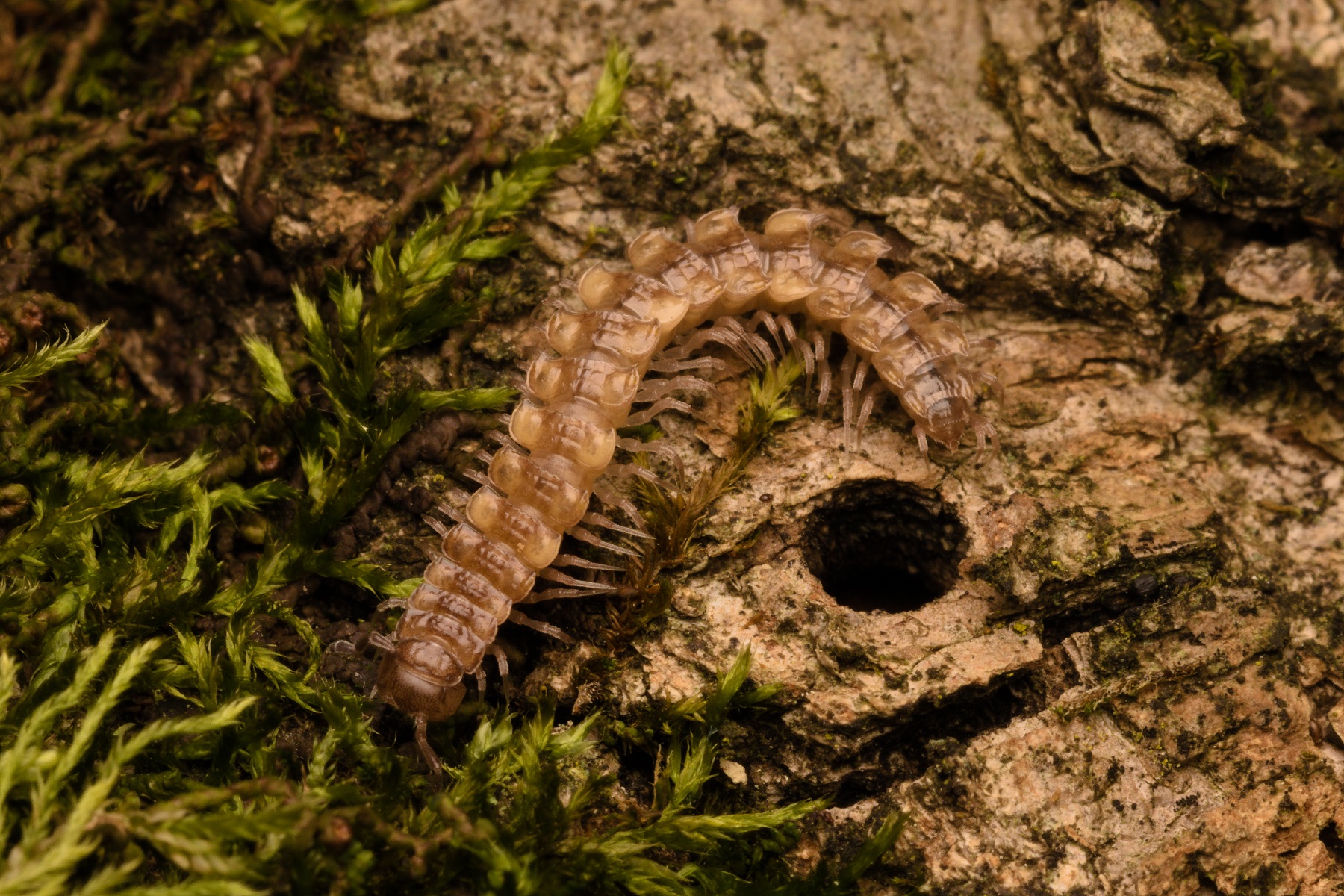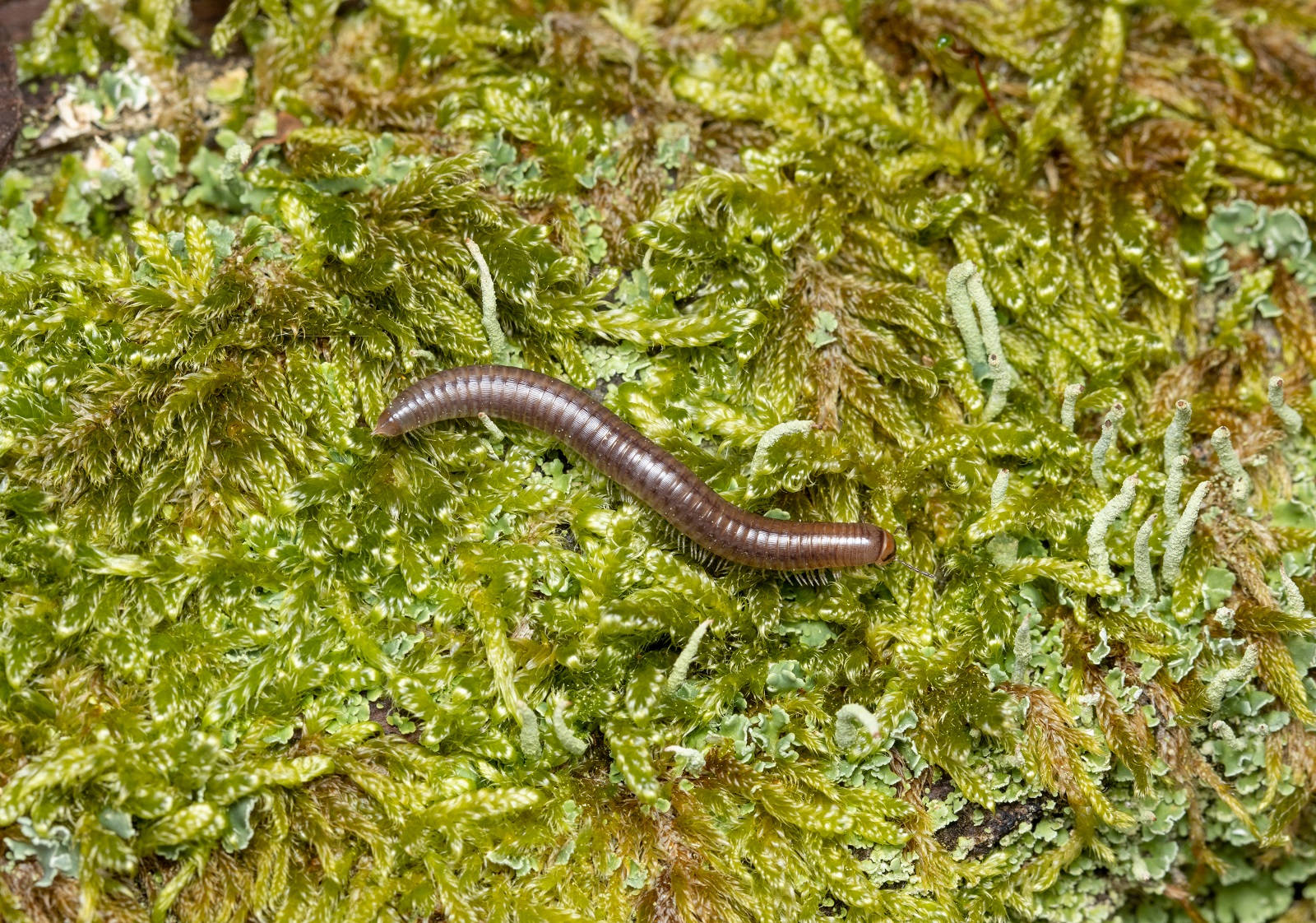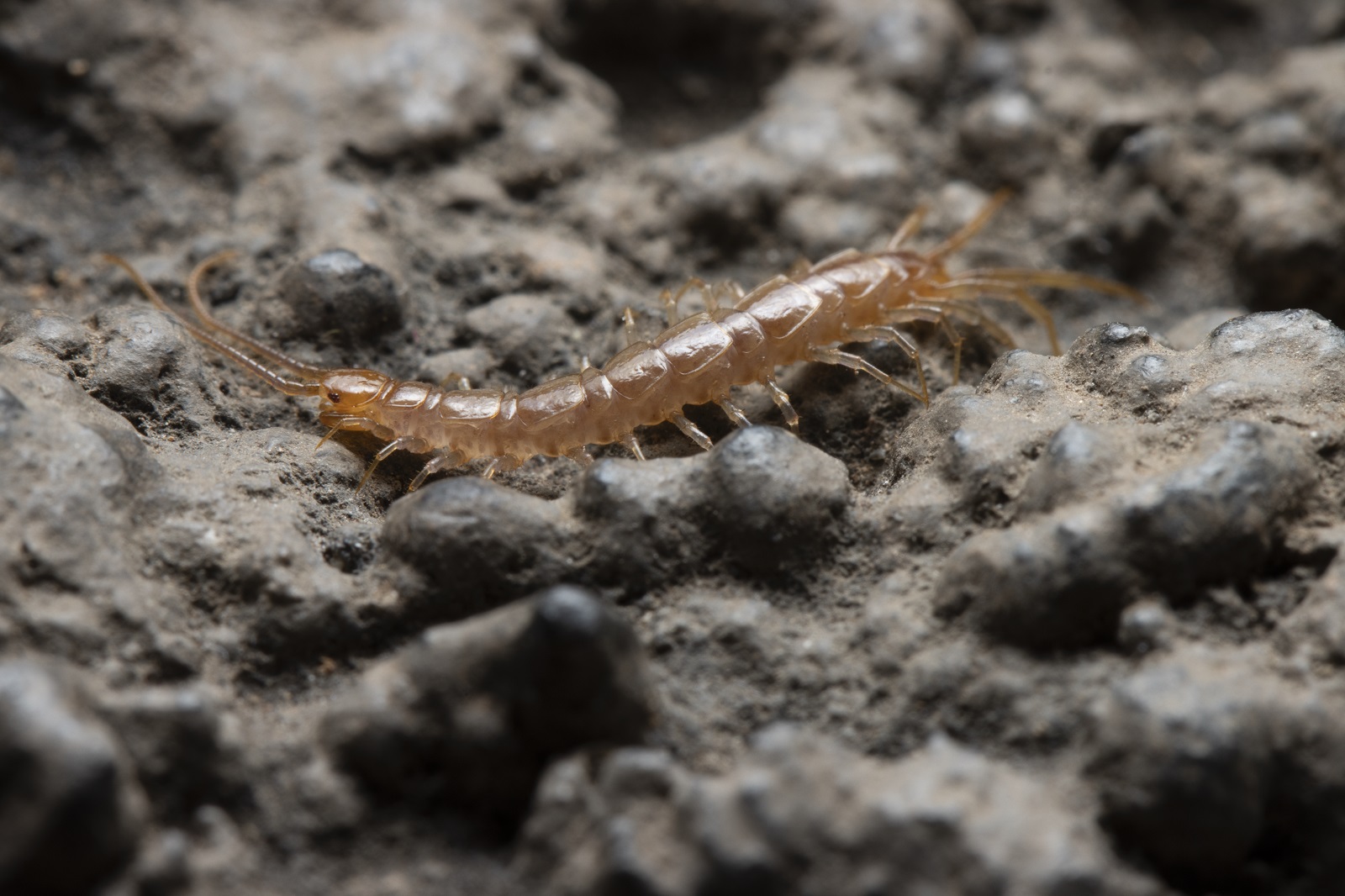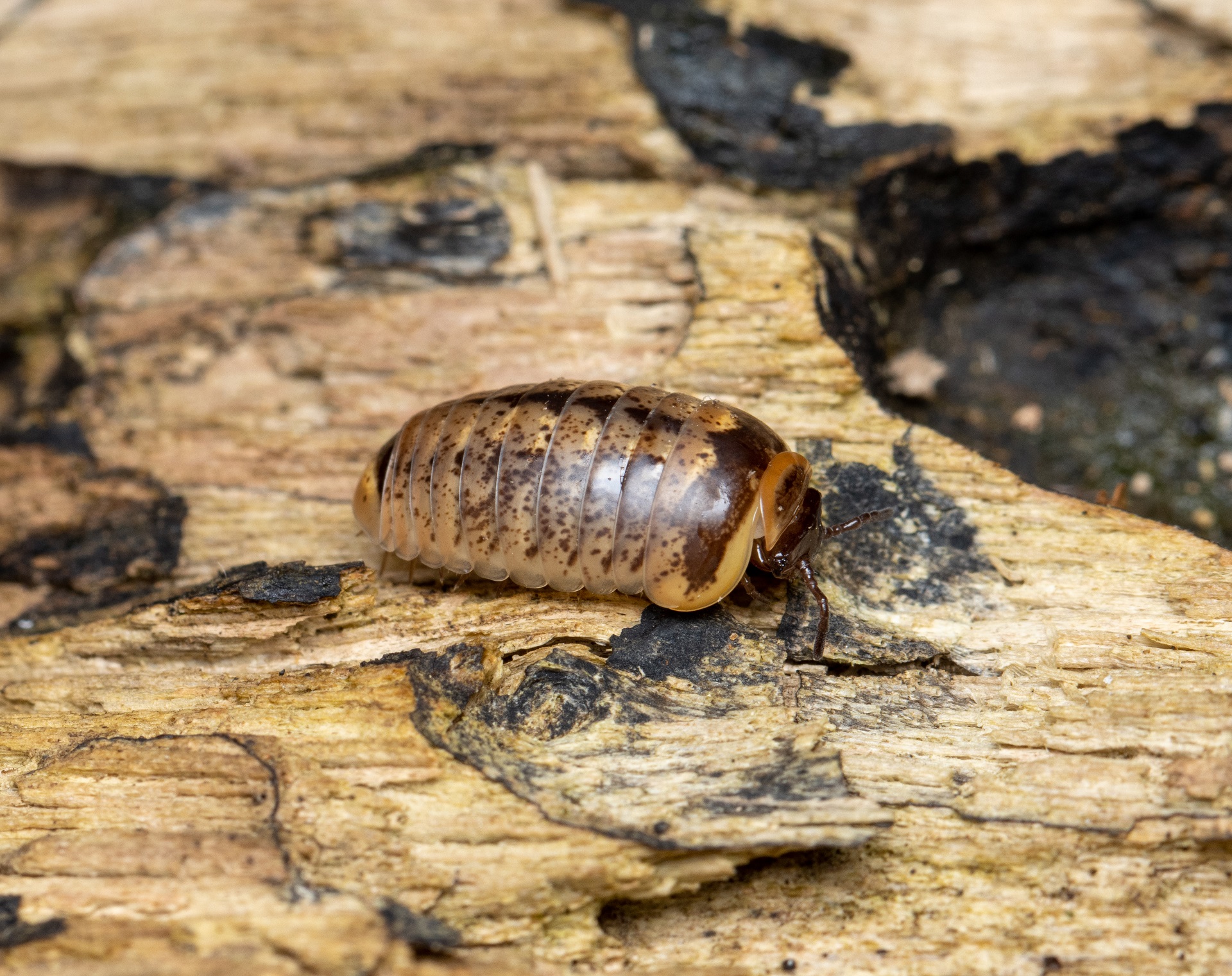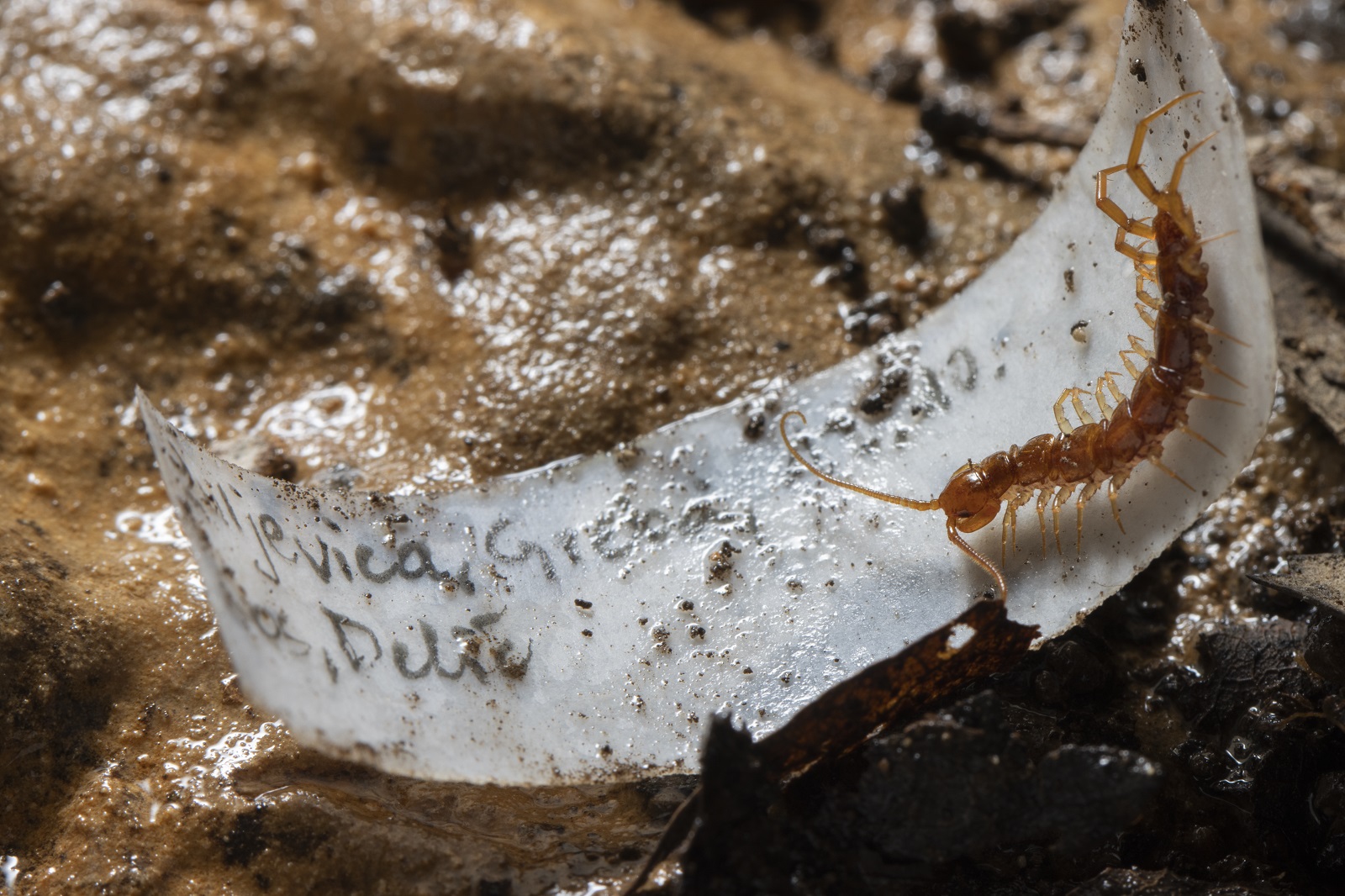
- Myriapods
Eupolybothrus sp.
Centipedes of genus Eupolybothrus belong to an order Lithobiomorpha. Centipedes (Chilopoda) are myriapods with a relatively simple body plan. Their body consists of a head and a metamerically segmented trunk. The segments of the trunk are all single with one pair of legs each, in contrast to millipedes, that have most of the trunk segments fused in a pairwise fashion, forming the so called diplosomites. Centipede species present in Slovenia generally reach between 3 and 6 centimeters in length.
The head consists of an acron and five segments which are fused into a uniform unit. At the sides of the head two groups of simple ocelli are located. Additionally, the head bears a pair of long antennae, a pair of mandibles and two pairs of maxillae (maxillae I and II).
The trunk consists of 15 segments. The first pair of appendages on the trunk are maxillipeds also known as forcipules which are modified as poison fangs and used to inject venom. The tergites covering the dorsal side of the trunk alternate in length, one long tergite followed by a short one. The exceptions are the seventh and the eight tergite which are of equal length. Laterally on the trunk the tracheae have their openings (spiracles or stigmas). Each segment of the trunk carries one pair of walking legs. The length of legs increases towards the posterior of the trunk. At the coxae of the last leg pair pores of coxal organs are located which release the pheromones. Shape and arrangement of these pores is an important characteristic in recognizing the genus.
The centipedes are soil arthropods. They dwell in soil, leaf litter, under stones and similar relatively humid environments, since their exoskeleton protects them from desiccation only to some extent. Like other centipedes, members of the genus Eupolybothrus are predators that feed on various small invertebrates.
During mating, the male deposits a packet of sperm (spermatopore), which is picked up by the female. In most centipedes the female protects the eggs and developing juvenile animals, by curling its body around them. In order Lithobiomorpha juvenile adult-like animals hatch from the eggs, which still lack some of the body segments. The same type of anamorphic development exhibit also the members of Scutigeromorpha, in which new body segments are added during molts of juveniles until the full complement of segments in adults is reached. Members of orders Geophilomorpha and Scolopendromorpha have epimorphic development, in which juveniles with full complement of body segments hatch from the eggs.
More photos
Related arthropods

Authors
- Urban Bogataj,
- Gregor Bračko,
- Teo Delič,
- Cene Fišer,
- Žiga Fišer,
- Rok Kostanjšek,
- Rudi Verovnik,
- Miloš Vittori,
- Valerija Zakšek.
Students Vito Ham, Vesna Jurjevič, Gaj Kušar, and Adrijan Samuel Stell Pičman also participated in the project.

